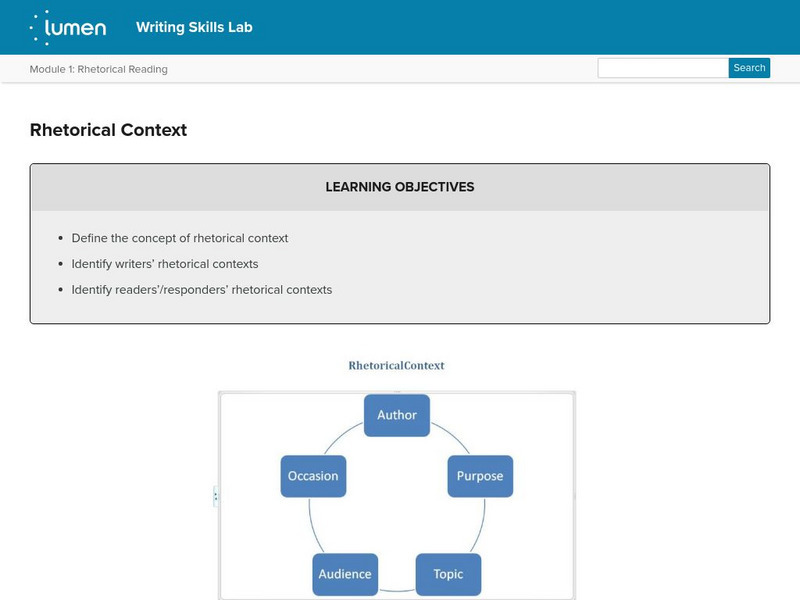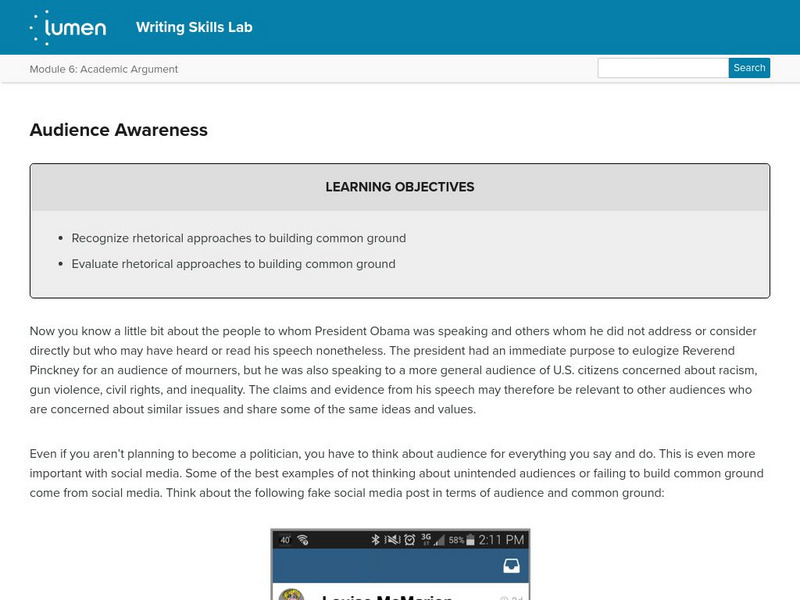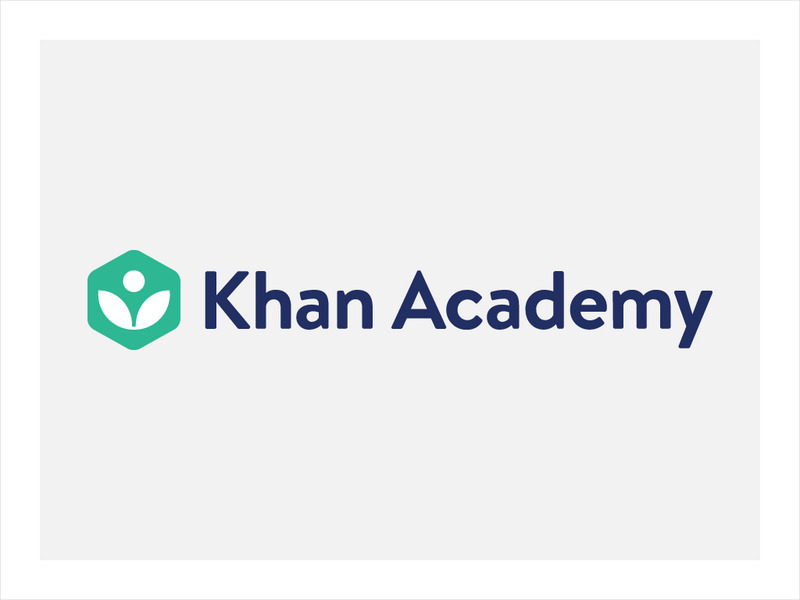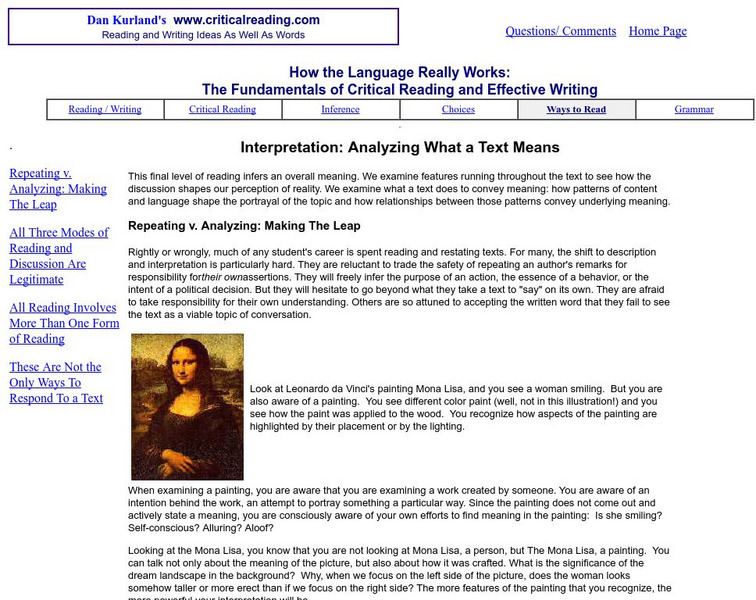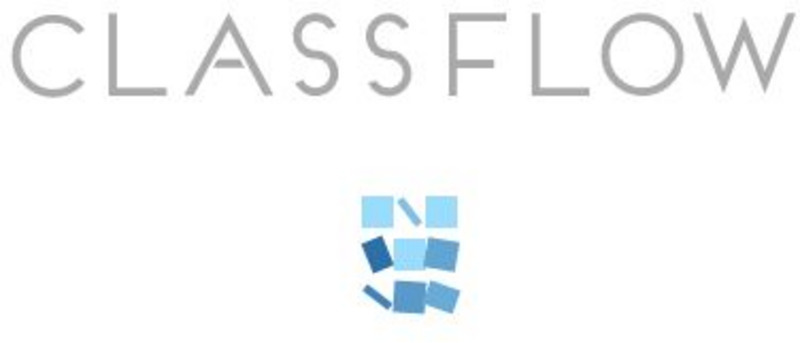Lumen Learning
Lumen: Critical Reading: Conclusion to Critical Reading
This lesson focuses on the importance and purpose of reading. It features an article entitled "The Benefits of Leisure Reading."
Lumen Learning
Lumen: Rhetorical Reading: Rhetorical Context
This lesson focuses on rhetorical context including defining it, questions to ask to understand it, and how it can be useful to the reader and responder.
Lumen Learning
Lumen: Rhetorical Reading: Putting It Together: Rhetorical Reading
This is a summary of the previous lessons having to do with rhetorical reading including rhetorical context, previewing text, actively reading, using context clues, and reading voraciously.
Lumen Learning
Lumen: Writing Skills: Conclusions
This lesson plan focuses on strategies for writing effective conclusions. It provides a list of strategies and a sample essay.
Lumen Learning
Lumen: Writing Skills: Audience Analysis
This lesson focuses on audience analysis and recognizing rhetorical approaches to building common ground. A practice activity is provided.
Lumen Learning
Lumen: Writing Skills: Audience Awareness
This lesson focuses on audience awareness by recognizing and evaluating rhetorical approaches to building common ground. It also provides an example.
Lumen Learning
Lumen: Writing About Literature: Additional Resources
This is "'The Legend of Sleepy Hollow': An Allegory for a Young America," an exceptional student example of literary analysis as well as an explanation to the main body of her paper. A link to the MLA website is also provided.
Lumen Learning
Lumen: Reading and Interpreting Literary Texts: How to Analyze a Short Story
This lesson focuses on analyzing a short story including all of the elements of a short story such as setting, plot and structure, and characterization.
University of Victoria (Canada)
Uvcs: Critical Reading Exercise
Students read quotations from different "interest groups" or "lobbies" in this exercise and then perform a multiple-choice test to evaluate the credibility of each lobby group.
Wisc-Online
Wisc Online: The You View
Students will write effective business messages that incorporate a second-person point of view and focus on the benefit to the reader. This approach is often used to create positive messages, neutral messages, and inquiry messages in...
Shmoop University
Shmoop: To Kill a Mockingbird Analysis
Self-derected learning paths covering the literary devices in To Kill a Mockingbird.
Department of Defense
Do Dea: Real Survival Skills
Learn about process analysis, writing procedurals texts, the steps of the writing process, and cause and effect in this unit. Also, examine patterns of organization in writing. A handy chart shows common organizational patterns which...
Lumen Learning
Lumen: American Literature: Reader Response Criticism
This lesson focuses on reader-response literary criticism including the purpose of reader response, the structure of a reader-response essay, how to criticize with examples, and an example of a reader-response essay using "The Secret...
Pennsylvania State University
Pennsylvania State University (Dr. Mc Clennen): How to Do a Close Reading
This guide is written for college students, but should be very useful for upper level high school students as well. The writer first describes fourteen steps to take in doing a close reading, then provides six pieces of advice on how to...
Thinkport Education
Thinkport: Analyzing Data Sources and Author's Purpose: Electric Currents
In this science-themed literacy lesson, students learn how to determine the author's purpose and follow the development of that purpose.
Other
Wisewire: Grades 9 10 Playlist: Analyze How an Author Unfolds an Argument
This is an example of how to analyze how an author unfolds an argument. It provides an example and links to use for practice. RI.9-10.3 author unfolds
Texas Education Agency
Texas Gateway: Informational Text: Analyze an Argument: Practice 1
When you read an argumentative essay or article, you should analyze the author's evidence. However, you can't analyze the evidence a writer gives in support of a position if you don't know the author's perspective.
International Literacy Association
Ila: Unlocking the Power of Informational Text With Five Creative Ideas
Five easy ways to help unlock the power of informational text for all students.
Khan Academy
Khan Academy: Primary Purpose Quick Guide
Primary purpose questions ask us to identify why the author may have written the passage. As you read through the passage the first time, it's a good idea to always be asking yourself: "So what?" "What's the point?"
Other
How the Language Really Works: Restatement
Choosing when to read for simple comprehension is the focus of this brief article.
Other
Critical Reading: How the Language Really Works: Interpretation
In this brief article, the author considers the ways that readers interpret text. An interesting comparison between reading and viewing a painting is worth a look.
Fun Trivia
Fun Trivia: The Four Types of Writing Trivia Quiz
A fifteen-question quiz in which the reader identifies a type of writing for each situation: argumentation, exposition, narrative, or description. Correct answers are displayed once answers are submitted.
Intel Corporation
Showing Evidence Tool: Analyzing and Evaluating Information
If you're looking for a way to engage students in analyzing and evaluating evidence, rather than simply piling up information, this tool may be a boon. Students can use it to construct an argument, rate the quality of resources, and...
ClassFlow
Class Flow: Analyzing Poetry
[Free Registration/Login Required] Students use poetic devices to analyze a poem of their choice from the Library of Congress.



